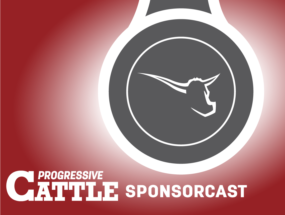Most beef producers prefer working with livestock over sitting at a desk doing paperwork. However, successful farmers and ranchers know that organizing the future of the operation requires some inside time. One aspect of any agricultural endeavor that often goes overlooked is the opportunity afforded by various grants available to producers.
The variety of grants available to a beef producer can be mind-boggling. The most common way to get grants may be through the USDA Natural Resources Conservation Service (NRCS). Providing technical assistance to farmers and ranchers across the U.S. since the 1930s, the agency was formerly called the Soil Conservation Service. Its name was changed in 1994, and many producers now have a solid working relationship with the NRCS.
Martin Beck has positive things to say about working with the NRCS in Rhode Island. Beck, along with a partner, has a herd of roughly 50 Pinzgauer cattle on prime grazing land on the New England coast.
“They’ve been helpful in supporting some regenerative agriculture projects,” he says. “They helped us with fencing and a buried water line. We have water in fields where we did not have water before.”
The fencing and the water line helped with Beck’s rotational grazing plan, but it was also geared around the fact that a drinking water source also exists near the farm, in a populated part of the country. The funding from the NRCS helped the ranch while keeping any runoff out of the drinking water.
Although Beck is positive about the NRCS, he thinks there may be trouble on the horizon. “A lot of that is getting shut down,” Beck says, wondering if the people at his local office who have helped in the past will still have jobs as USDA and the Department of Government Efficiency (DOGE) continue to cut federal budgets and programs.
Rhode Island also has its own state-run grant program, the Local Agriculture and Seafood Act (LASA) Grants Program. The program aims to assist local producers with infrastructure, ensuring that local agriculture thrives in a sometimes difficult marketplace. Many states have similar programs. More information can be found at your state department of agriculture.
Dan Kaplan runs Heartstone Farm in Charleston, Maine. Starting out as a relatively small operation providing beef to local customers, Kaplan has recently expanded his business significantly. Although he still raises beef on his own 500-acre farm, he also sources a variety of livestock across New England and ships meat as far away as Ohio. His business is a local competitor of operations like Butcher Box.
Kaplan also has good things to say about the NRCS.
“They do the work for you,” he says of the process to get a grant through the NRCS. Like Beck, Kaplan improved infrastructure on his farm to make grazing more efficient and protect waterways through NRCS funding.
Kaplan also has a word of caution about applying for grants: “You don’t want to be changing direction on your farm in order to get a grant,” he warns, emphasizing that your genuine business plan – not a grant opportunity – should be guiding the future of the operation.

Image by Tyrell Marchant.
Though Kaplan is an experienced, articulate and successful businessman, he notes that sometimes some help is needed in getting a grant. When applying for a USDA Value-Added Producer Grant, he hired someone to write the grant because of the complexity of the application process. (The value-added grant is open to all farmers, including beef producers. The current deadline for application is April 17, 2025.)
Some grant writers charge up to 20% of the awarded grant money. Some only charge if the application is successful, while others charge a flat fee or by the hour. With the current uncertainty about the status of federal grant money, many grant writers are finding themselves overbooked and unavailable.
Not all grants are for everyone. Doing the research to know what is involved in the grant is key. If a producer doesn’t have the time to complete the grant project, there’s no point in applying.
An unusual grant opportunity is available through an organization called the Food Animal Concern Trust (FACT). Harry Rhodes, FACT’s executive director, say the goal of the organization is, “All animals raised for food should be raised humanely.” Geared toward small to medium livestock producers, FACT has given out roughly 750 grants – totaling about $1.5 million – since 2012.
FACT’s grants are competitive. Last year there were over 300 applications for the roughly 70 grants that were ultimately awarded. Grants are usually up to $3,000, but some can be as large as $10,000 and are intended to help producers make sure animals are raised in a humane manner.
Rhodes emphasizes that the farmers he talks to all care deeply about their animals’ welfare, and he believes livestock production is not always covered accurately in the media.
The USDA Sustainable Agriculture Research and Education (SARE) also offers grants that are available to beef producers. SARE is organized into four regions – North Central, Northeast, Southern and Western. The farmer grant applications are due in the fall, and projects are focused on on-farm research – coming up with an innovative way to solve some farm or ranch problem.
A search of past grants related to beef production on the national SARE website shows a wide variety of innovative projects. Ranchers have conducted research on ways to mitigate drought, unusual feeds and ways to market their products, among many other topics. When applying for a SARE grant, the producer needs a technical advisor who represents an expert voice in the specific field at hand, such as an extension agent or a professor.
If you belong to a breed or local cattle association, officers of the association may be able to help you find potential grants. Extension agents or state universities can also be potential valuable resources when looking for a grant.
Learn more about available grants at the following websites:










